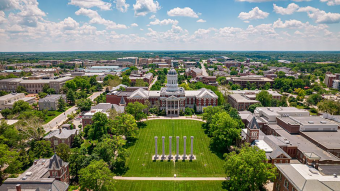May 19, 2025
Contact: Christopher Ave, christopher.ave@missouri.edu
The University of Missouri Board of Curators today approved increases to tuition rates for the 2025-26 academic year. The new rates will allow UM System universities to continue investing in wider course variety; improved faculty recruitment and retention; better classrooms, laboratories and equipment; and new research opportunities.
“We are committed to offering a world-class education that supports student success and provides more value to our state,” University of Missouri President Mun Choi said. “Over the past decade, we’ve made significant investments to achieve the highest retention rate (93%) and graduation rate (76%) and placement rate (95%) in our history. Students graduating at a high rate ensures low cost of attendance.”
“The Board of Curators remains committed to exercising fiscal responsibility to ensure we continue to achieve our mission of education, research, outreach and economic development,” UM Board of Curators Chair Todd Graves said. “Today’s tuition increases keep our costs competitive regionally and nationally while maintaining our commitment to students, faculty, staff and our state.”
Undergraduate tuition at all four UM universities will rise 5%, which equates to a roughly $20-$25 increase per credit hour depending on the university. Graduate and professional tuition increases will range from 3% to 5%. Further details will be available at each university’s website in the coming days.
Even after this year’s tuition increases, the cost of education at UM universities remains significantly lower than the national average. Over the past decade, the cost of tuition in the UM System has risen at a rate below the rate of inflation.
In addition, US News and World Report ranks Mizzou as the best value compared to all public institutions in surrounding states and in the Southeastern Conference. It ranks #4 among flagships nationally.
Mizzou continues to outperform national averages in retention rates, graduation rates and post-graduation success. It is tied for first among the surrounding state flagships with a 95% career outcome rate. It achieves all of these qualities with the second lowest net tuition per student among flagships in surrounding states. Parents and students have taken notice of these facts, as freshmen enrollment has increased 45% in eight years.



